
3 minute read
Fly Tying: The Latex Tail Sculpin
Dron Lee is an innovative fly tyer out of Malaysia. He runs the website www.flytyingnation.com and has been extremely influential, internationally, with a steady flow of new tying techniques and creative imitation patterns that, not only look amazing, but also fish amazingly well. In the following, Dron Lee presents his Latex Tail Sculpin; a pattern that will do equally well for European brown trout and Scandinavian seatrout. Oh, and let’s not forget marble trout and hucho!!!
Material List// Tail: FTN Latex tail Hook: Ahrex NS115 Deep Streamer D/E #4 Weight: DIY belly weight out of 1mm lead sheeting Eye: 3mm epoxy eyes Fin: Squirrel Zonker Head and body: SR Under Fur, ICE UV dubbing, Deer Creek Mega Lazer Dub Colour: Pro Markers

1.Secure the tying thread and prepare the thread base on hook.
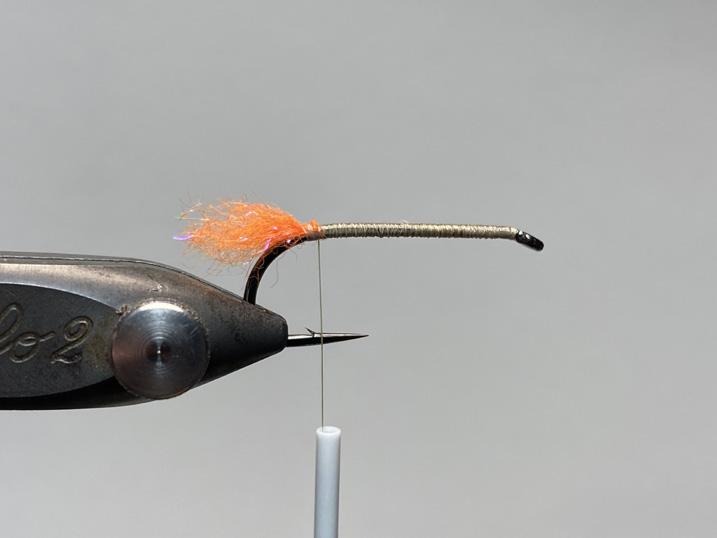
2. Tie in some Deer Creek Orange Mega Lazer Dub.

3. Tie in some ICE UV dubbing on top of the Deer Creek Orange Mega Lazer Dub.

4. Fold the dubbing back over and tie it firmly down.

5. Tie in some SR Under Fur, underneath the hook shank.

6. Fold the SR Under Fur over and back, and tie the fur firmly down.

7. Now pull the hook through the latex tail (pre-cut into the right shape and coloured with marker pens).
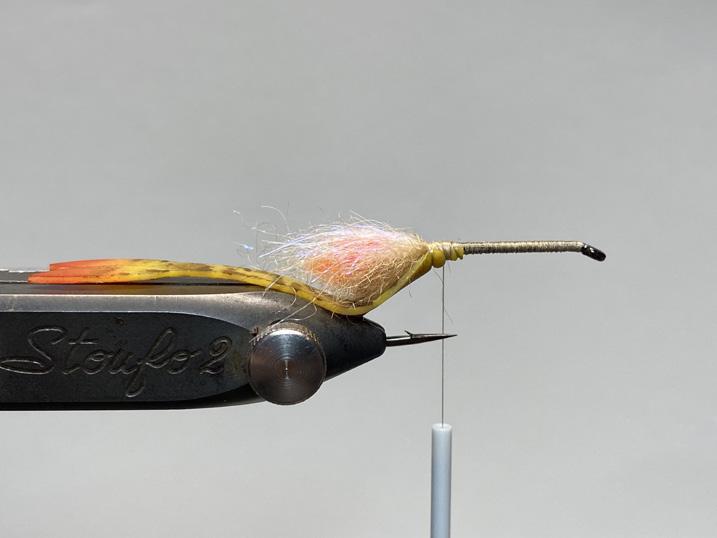
8. Firmly secure and tie down the latex tail.
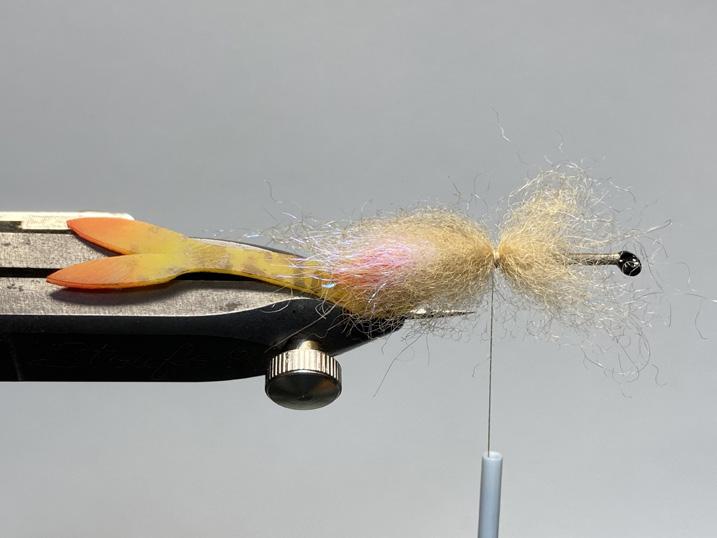
9. Now tie in some more SR Under Fur right in front of the latex tail.
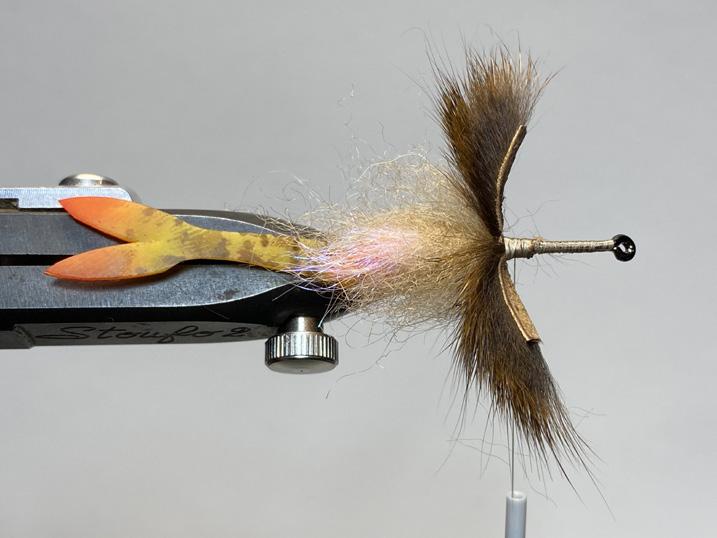
10. Fold the fur back over and tie it firmly down. Then tie in 2 pcs of Squirrel Zonker strips.

11. Reverse the vise head 180 degrees and tie in some SR Under Fur on the belly of the hook, fold it back and tie it down.

12. Reverse the vise head another 180 degrees, then fold the zonker strips, forming a loop, and tie them down as shown in picture
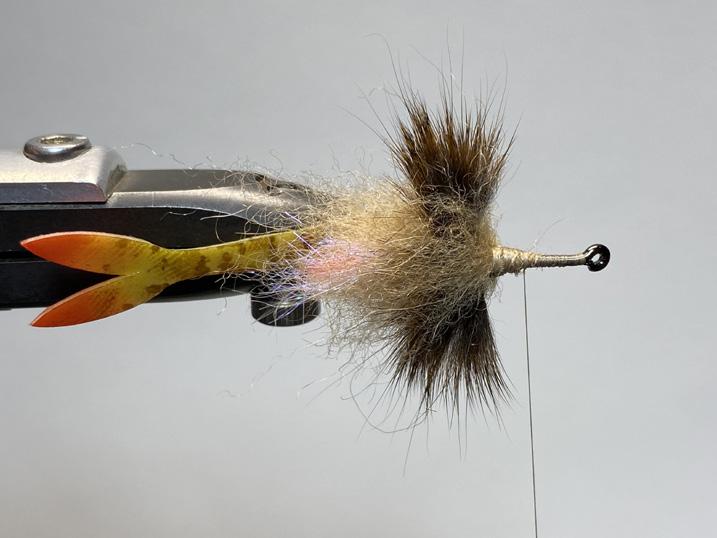
13: Tie in some SR Under Fur in front of the zonker strips.
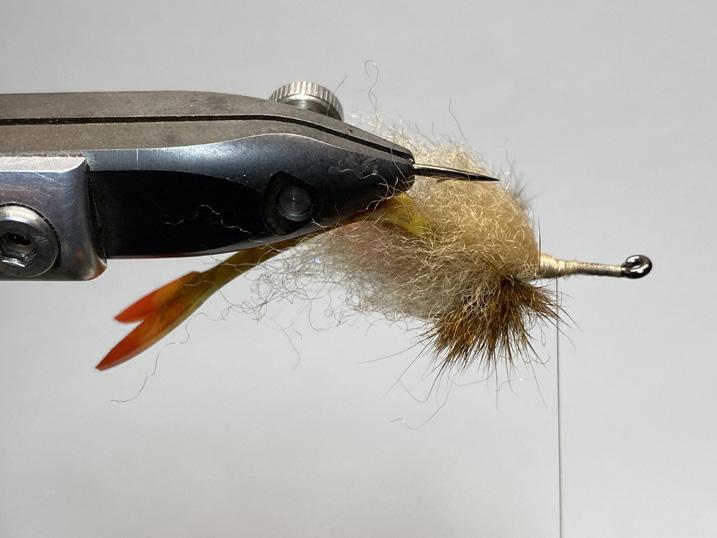
14: Now continue tying in additional SR Under Fur, fold it back and tie it down to create the head profile

15: Repeat the step 14, until you’ve built a suitably sized head.

16: Now, tie in the belly weight. It can be customized depending on how heavy you want the fly to be.

17: Repeating step 14, continue building the head.

18: Trim the SR Under Fur with a pair of good scissors and provide the fly with the right shape.

19: Color the head with markers to get the colours and patterns you like.

20: Use 3-minute epoxy (or similar) to build a base for the eyes.

21: Glue on the 3D-epoxy eyes.
The development of the Latex Tail Sculpin started 5 years ago. My initial idea was to incorporate a latex flipper tail on a sculpin pattern. I like latex as a fly tying material, and I like the fact that latex is very supple. Sculpins move very erratically and by incorporating a latex tail on my new sculpin pattern, I was aiming for a certain action – and for a tail that would flap and lift in a jigging manner, thus creating a very lifelike sculpin movement pattern. The whole idea, basically, was to imitate a fleeing sculpin trying to dive down and hide in the sand or pebble along the bottom.
The latex tail is pretty long compared to the hook, but it allows for free movement. And the shape of the sculpin head with a curved belly makes the fly glide down in a natural swooping manner, instead of heading straight down (like a jig fly would otherwise do). A conventional strip and pause presentation will create a tail flipping action which is very similar to how a real sculpin moves and behaves in the water.

For weight, I’ve incorporated and extra-heavy DIY belly weight system where I’ve cut into shape a 1mm thick lead sheet, which I’ve then tied in near the hook eye. I’ve done this to replace conventional dumbbell eyes and to create a curved belly - for the gliding action.
An extra heavy-wire streamer hook with a down-turned eye - in this case, the Ahrex NS115 - was ideal for this application.










